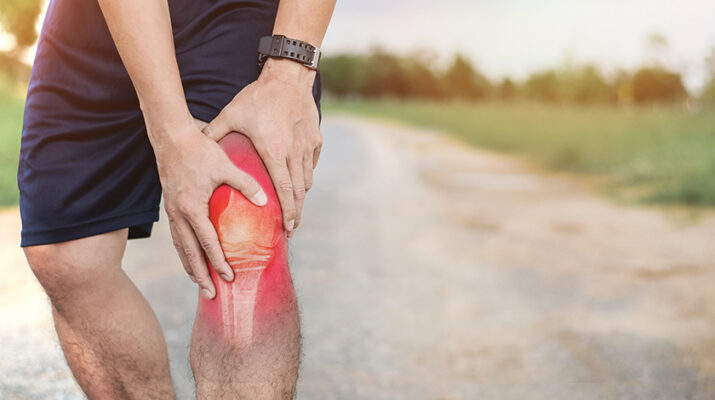If your joints hurt, it can be challenging to meet your fitness goals: cardiovascular health, flexibility, balance, and strength. To minimize and even prevent pain, try these strategies:

1.Keep moving
It may seem sensible to stop exercising if you experience joint pain, but Kamaljeet Banga, orthopedic surgeon for the Center for Orthopedic Care at Oswego Health, said that becoming sedentary will only cause chronic joint to begin earlier in life and make existing pain worse.
“The patients we’re seeing the most are middle-aged,” he said. “One day they’re fine, the next day, they have pain. They’re getting younger for developing arthritis. Our parents and grandparents had minimal arthritis in older age. I’m seeing people in their 30s with arthritis.”
He encourages people to engage in regular physical activity and to do it right. For example, running on the pavement is harder on joints than running on a softer surface, such as a grassy area or a treadmill. It is also vital to perform strengthening and stretching movements for 10 to 15 minutes daily.
“Swimming is low-impact,” Banga said. “A lot of health clubs have a pool, as does YMCA.”
Vary your cardio routine.
Always engaging in high impact activities and excessively practicing a sport or physical activity can mean joints will wear out too soon. Banga encourages people to vary their exercise.
For example, instead of running five days a week, try water-based exercise, using an elliptical machine or biking. Check out this traditional style ladies bike with basket that’s great for beginners. He added that activities like yoga, Pilates and tai chi are good for joints.
Of course, acute pain from an injury should be treated and the care provider will likely recommend rest. Providers tell most people with chronic joint pain from arthritis to continue exercising in a safe fashion.
2.Treat pain
“No pain, no gain” does not apply here. You should seek medical attention as needed and follow your care provider’s guidance for pain management to keep moving.
“You should calm down that joint,” Banga said. “If there’s fluid, there’s inflammation. Anti-inflammatory medication, cream and light exercise may be recommended. Sometimes, you may need steroid injections. Once that’s calmed down, exercise is the best evidence to keep moving the joint to slow the progression of arthritis.”
3.Lose weight
Banga encourages patients to lose pounds for overall health and to make life easier for their joints. Losing weight is not about temporarily “going on a diet” to drop a few pounds.
“You have to change your lifestyle,” he said. “It’s hard to follow a strict diet but make a habit of reducing the ‘bad things’ and eat better things. Eating the same amount as 20 years ago is not good for you. Intermittent fasting is a good thing and can help you lose weight.”
4.Eat right

While improving your diet will not reverse the effects of arthritis
overnight, it certainly supports the effect of reducing inflammation and improving the chances of losing weight.
“Eat fresh fruits and vegetables, whole grains, fatty fish like trout and salmon, nuts, and seeds, like flax and chia,” said Julie Mellen, registered dietitian with SUNY Upstate. “These are good foods for reducing inflammation.”
Some people report anecdotally that they find relief taking supplements containing glucosamine and chondroitin. Mellen said, “I don’t have enough research for recommending them. With supplements, I question whether or not they contain exactly what you’re buying.”
5.Drink enough water
“Hydration is important for joint health,” Mellen said.
Consuming water helps the body stimulate its generation of synovial fluid, which reduces inflammation. It also boosts circulation and promotes the generation of new cells.

